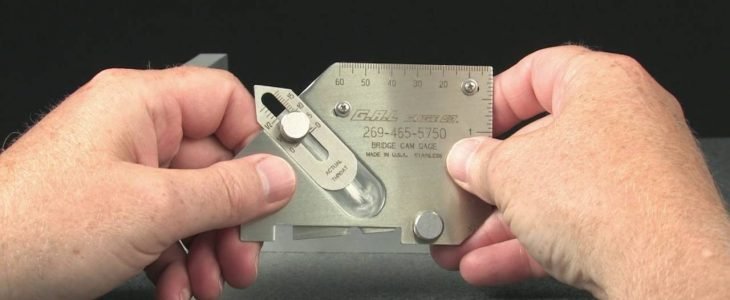
The Cambridge Type Gauge consists of a height gauge, undercut depth gauge, main scale, angle gauge and multiple-purpose gauge and is specially used for the measuring the toe, throat, angle, height and depth of undercut on weldment, It is made of stainless steel and is characterized by portable and compact structure, easy operation, wide application. It is an integral part of an Industry.
It’s a simple tool that allows you to perform several different types of measurement of welds ie. We can measure
- Undercuts or pits
- Fillet weld leg length
- Fillet weld throat length
- Weld reinforcement
- Outside misalignment
- Angle of preparation
Undercuts or pits
To measure the undercut or pit place the tip of gauge in the area of undercut and lower the legs of the gauge till other legs touch on the surface of the weld. And the amount of undercut is observed from the scale.
Fillet weld leg length
To measure the fillet weld leg length, place the tip at the toe of the weld and lower the length of the gauge to the surface of the weld and take the measurement from the weld.
Fillet weld throat length
To measure the actual fillet weld throat dimension using the mitre slide on a Cambridge type gauge, first, extend the slide as far as it will go. Touch the tip at the throat of the weld and lower the gauge until the legs of the gauges touch the base metal of the weld and point out the throat length using the gauge.
Weld reinforcement
To measure the weld reinforcement, place the gauge tip on to the highest point of the reinforced part and lower the gauge till the legs touch the surface of the weld. The weld reinforcement dimension is then read from the scale of Cambridge type gauge
Outside misalignment
To measure the outside misalignment of a pipe, place the legs of the gauges straightly on one outer surface of the two welded pipe and touch the tip of the gauge on the outer surface of the second pipe. Take the measurement red on the scale of the Cambridge type gauge will show the misalignment of one pipe over the other.
Angle of preparation
To find the angle of preparation of the pipe section, place the legs of the gauge squarely on the outer surface of the pipe and lower the rotating segment of the gauge until it rests squarely on the bevel end of the pipe. The reading of the angle scale on Cambridge type gauge will show the bevel angle of the pipe prepared.
